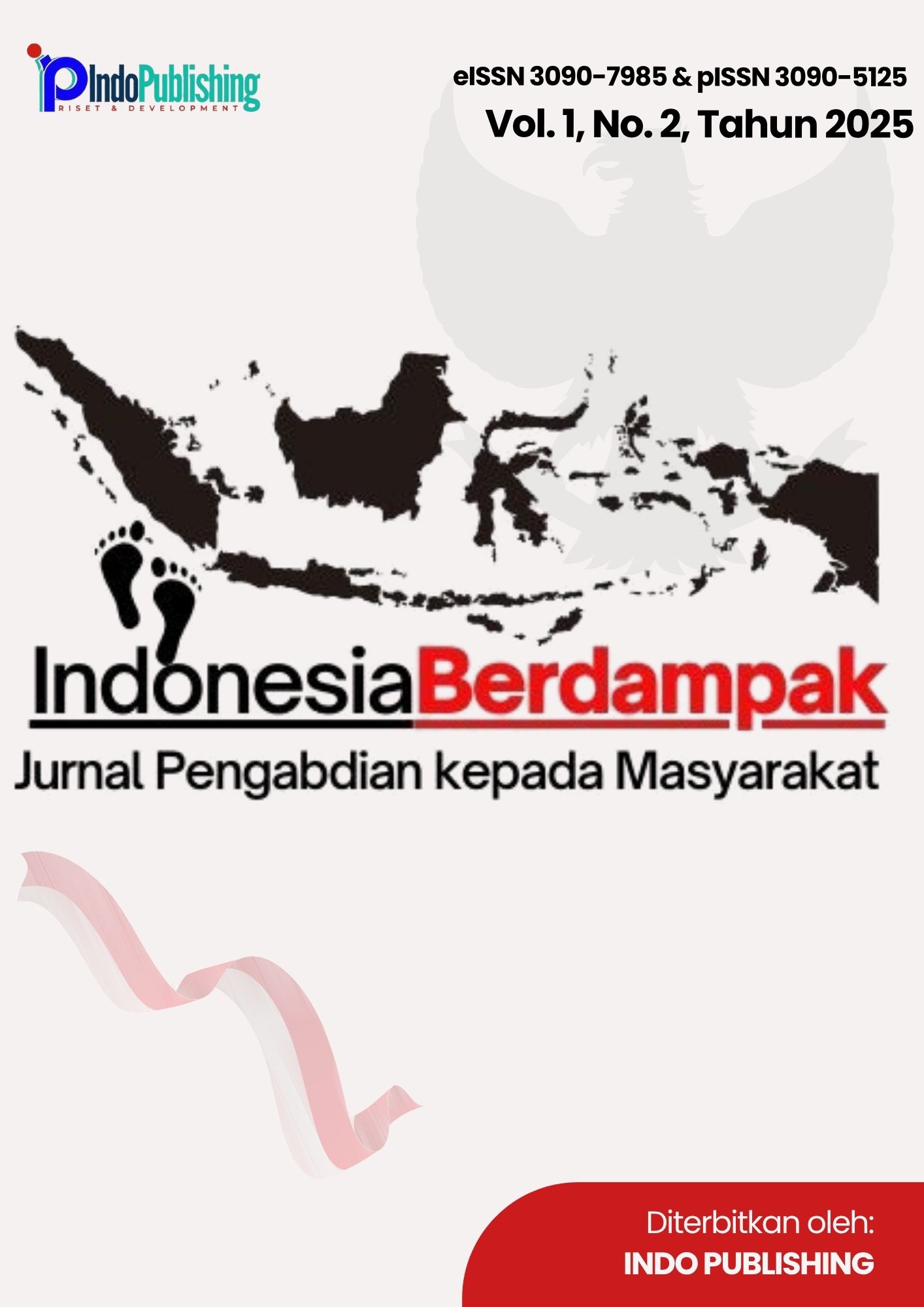Pelatihan Canva untuk Guru SD Sekecamatan Majenang Kabupaten Cilacap
DOI:
https://doi.org/10.63822/ckm0sw73Keywords:
Canva, Elementary Teacher, Visual DesaignAbstract
This training program was designed to improve the competence of elementary school teachers in creating visual-based instructional media using the Canva application. Held for teachers in Majenang District, Cilacap Regency, the training combined theoretical lectures, live demonstrations, and hands-on practice to ensure comprehensive understanding and skill acquisition. At the outset, a pre-test was conducted to assess the participants’ initial knowledge and digital design skills. The results showed an average score of 58.3, indicating limited experience with design tools and low literacy in visual media creation. Following the training, a significant improvement was observed. A total of 90% of the participants successfully produced at least two educational media products, such as posters, infographics, and activity cards. The post-test results revealed an average score of 86.7, demonstrating a substantial increase in understanding and practical ability. Additionally, the satisfaction survey showed that 92% of participants were very satisfied with the content, delivery method, and technical assistance provided during the sessions. This outcome highlights the effectiveness of the training in empowering teachers to utilize Canva for innovative and engaging learning materials. The participants are now better equipped to apply these skills in their classrooms, contributing to a more visually appealing and interactive learning environment.
Downloads
References
Kolb, D. A. (2014). Experiential learning: Experience as the source of learning and development. FT press.
Kurniawan, D. , & Lestari, R. (2021). Penerapan Teknologi Informasi dalam Pendidikan Dasar di Era Digital. Jurnal Pendidikan Inovatif, 8(2), 123–130.
Mardiyati, S., Alam, B. P., & Wibowo, A. N. (2025). Pelatihan Aplikasi Canva Sebagai Strategi untuk Meningkatkan Kemampuan Teknologi pada Komunitas Belajar Guru Majenang Kabupaten Cilacap Jawa Tengah. Aksi Kita: Jurnal Pengabdian Kepada Masyarakat, 1(3), 134–140.
Mustari, M. (2022). Manajemen pendidikan di era merdeka belajar. Prodi S2 Studi Agama-Agama UIN Sunan Gunung Djati Bandung.
Parasuraman, A., Zeithaml, V. A., & Berry, L. (1988). SERVQUAL: A multiple-item scale for measuring consumer perceptions of service quality. 1988, 64(1), 12–40.
Prasetyo, Y. T. , & Wahyuni, D. (2021). Peningkatan kompetensi guru melalui pelatihan pembuatan media ajar digital berbasis proyek. . Jurnal Pendidikan Dan Teknologi, 5(2), 44–52.
Setiawan, R. , & Pratiwi, T. (2023). Kolaborasi Guru dalam Pengembangan Media Pembelajaran Digital di Sekolah Dasar. . Jurnal Inovasi Pendidikan, 11(1), 34–42. , 11(1), 34–42.
Suryani, E. , & Nugroho, D. A. (2022). Tantangan Guru di Daerah dalam Penggunaan Media Digital Pembelajaran. . Jurnal Pendidikan Dan Teknologi, 9(1), 88–95.
Unesco, I. C. T. (2011). Competency framework for teachers. Paris: United Nations Educational, Scientific and Cultural Organization.
Wijaya, H. , Nugroho, M. , & Sari, A. P. (2022). Pelatihan digital berbasis aplikasi untuk meningkatkan motivasi guru dalam pengembangan media pembelajaran. . Jurnal Inovasi Pendidikan Dan Pembelajaran Sekolah Dasar, 6(1), 30–40., 6(1), 30–40.
Yuliana, E. , Saputra, B. , & Kartini, D. (2022). Membangun Literasi Digital di Sekolah Dasar Melalui Guru Melek Teknologi. . YJurnal Pendidikan Dan Literasi, 6(3), 1145–1152.
Downloads
Published
Issue
Section
License
Copyright (c) 2025 Zainal Arifin, Tri Angkarini, Nini Adelina Tanamal, Edward Alfin, Ricky Eka Sanjaya (Author)

This work is licensed under a Creative Commons Attribution-NonCommercial-ShareAlike 4.0 International License.





